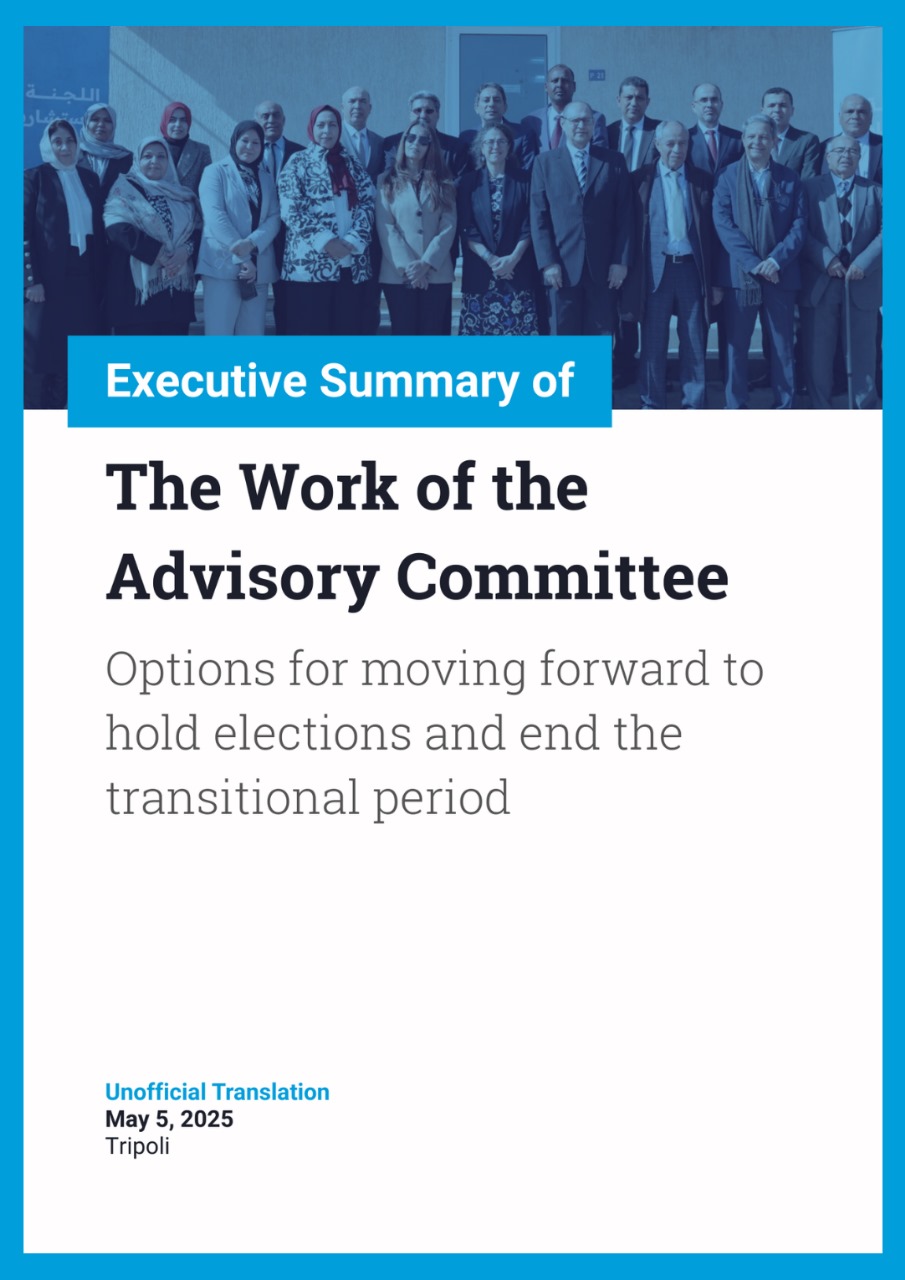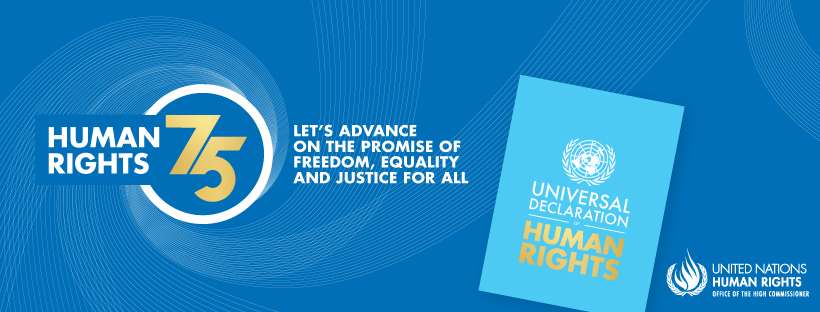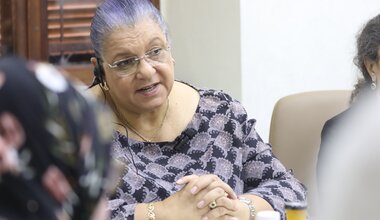HUMAN RIGHTS REPORT ON CIVILIAN CASUALTIES 1 November through 31 December 2018
Tripoli – (1 November to 31 December 2018) -The United Nations Support Mission in Libya (UNSMIL) documented 34 civilian casualties – 13 deaths (11 men, one woman, one boy) and 21 injuries (16 men, two women, three boys)– during the conduct of hostilities across Libya. The majority of civilian casualties were caused by gunfire (11 killed and 17 injured), followed by improvised explosive devices (two killed and four injured). Casualties were reported in Tazirbu (eight killed and 10 injured), Tripoli (four killed and seven injured), Sabha (two injured) and Benghazi (one killed and two injured).
Civilian Casualty Incidents
Tazirbu
On 23 November 2018, Islamic State in Syria and the Levant (ISIL) fighters carried out an attack on Tazirbu in the southeast of Libya, 250 kilometers northwest of Kufra. Reportedly, ISIL fighters shot dead eight civilians and injured nine others inside a Tazirbu police station. Sources reported that fighters also abducted at least 13 other residents of the town.
Tripoli
On 25 December 2018, two male civilians were reportedly killed and four civilians injured, including three men and one woman, in an attack against the building of the Ministry of Foreign Affairs (MoFA) in the Zawyt al-Dahmani area. At least three men equipped with suicide-vests and AK-47 rifles conducted the attack. Reports indicate that a suicide vehicle-borne improvised explosive device was first detonated next to the main gate entrance, facilitating access to the building by the remaining two attackers. Once inside the building, the latter started shooting indiscriminately until they ran out of ammunition and subsequently activated their suicide belts.
Also, on 25 December 2018, a health care worker sustained a gunshot wound to his left leg when an ambulance was shot during clashes following the suicide bomb attack against the Libyan MoFA in Tripoli.
Civilian Facilities
On 1 November 2018, UNSMIL observed the illegal use of force and intimidation against private and public institutions in Tripoli, notably at the Aman Bank al-Siyahia Branch and the Libyan Arab Foreign Investment Company (LAFICO). The assaults aimed to seize control of these institutions and to obtain privileged access to financial resources. Armed men, acting under the guise of providing security, intimidated and, in some cases, physically assaulted staff.
On 4 November 2018, an indiscriminate shell hit a school in Sebrata when clashes erupted between forces of Ahmad al-Dabbashi (aka al-Ammo) – formerly operating under the name of Battalion 48/Martyr Anas al-Dabbashi Battalion – and Anti-ISIL Operations Room Sebrata (AIOR) and affiliated elements of the Wadi Brigade. No casualties were reported, and students were evacuated to safety. The school was closed for two days.
During the reporting period, there were attacks on the Sharara Oil Field and al-Hasawna water systems. On 9 December, armed elements affiliated with the Petroleum Facilities Guards (PFG) took over the Sharara Oil Field, forcing the National Oil Company chairman to declare force majeure and suspend activities.
On 20 December 2018, a bomb exploded in the premises of the “Committee on the Follow-up on the Misrata/Tawergha Reconciliation” in Tumina. No civilian casualties were reported. However, the Committee’s premises, files and documents sustained damages. The perpetrators have not yet been identified.
On 26 December 2018, unidentified armed men opened fire inside the Intensive Care Unit at al-Jalla Hospital in Benghazi. No casualties were reported, but the attack resulted in material damage and caused panic and fear among patients and medical personnel.
Attribution
In separate statements released by the “Amaq news agency”, ISIL claimed responsibility for the attack against the Tazirbu police station on 23 November 2018 and for the 25 December 2018 attack against the MoFA building.
UNSMIL was unable to determine with certainty which parties to the conflict caused the other civilian casualties during the reporting period.
Casualties from other violations of international humanitarian law and violations or abuses of human rights
On 1 November 2018, an armed group shot a surgeon in the leg and threatened medical staff in al-Jalaa hospital in Tripoli. The surgeon had previously refused the armed group access to the medical facility when it sought to arbitrarily arrest another doctor who had performed an unsuccessful operation. The identity of the perpetrators remains unknown.
On 3 November 2018, armed men shot an orthopedic consultant in the leg in the Sabha Medical Center. The identity of the perpetrators and their motives remain unknown.
On 11 November 2018, a 16-year-old boy sustained a gunshot wound to his left leg by stray bullets in Benghazi’s Deriana area. The source of fire was unknown. There were no clashes in the vicinity of the incident.
On 1 December 2018, a seven-year-old boy was killed by stray bullets at al-Maskin area in Benghazi. It was reported that the child had been in the car of his father when he was shot dead. The source of fire was unknown. There were no clashes in the vicinity of the incident.
On 4 December 2018, a man shot and injured a medical doctor working inside the Sabha Medical Center. The identity of the perpetrator and his motive remain unknown.
On 15 December 2018, unidentified armed elements attacked the house of a Libyan national in Tripoli’s Qasr Bin Ghashir neighborhood, resulting in the death of one woman and her child. The identity of the perpetrators remains unknown. Motives are likely linked to on-going tensions between Tripoli-based armed groups.
On 25 December 2018, a woman was injured by stray bullets in Benghazi’s al-Wahishi neighborhood. The source of fire was unknown. There were no clashes in the vicinity of the incident.
Note
The figures for civilian casualties set out above only include persons killed or injured in the course of hostilities and who were not directly participating in the hostilities. The figures do not include those casualties that are not a direct result of hostilities, for example executions after capture, torture or abductions, or casualties caused as an indirect consequence of hostilities. The figures are based on information UNSMIL has gathered and cross-checked from a broad range of sources in Libya, including human rights defenders, civil society, current and former officials, employees of local governments, community leaders and members, witnesses, others directly affected and media reports. In order to assess the credibility of information obtained, where possible, UNSMIL reviewed documentary information, including medical records, forensic reports and photographic evidence.
The figures are only those that UNSMIL was able to document in the reporting period. They are not likely to be complete and may change as new information emerges about incidents involving civilian casualties that took place during this period.
Similarly, while UNSMIL has systematically tried to ensure that the cases it documented are based on credible information, further verification would be required to attain a higher standard of proof. Due to the security situation, UNSMIL has not been able to carry out direct site visits to all relevant locations in Libya to obtain information. Fear of reprisals against sources further hamper information gathering.
While not all actions leading to civilian casualties breach international humanitarian law, UNSMIL reminds all parties to the conflict that they are under an obligation to target only military objectives. Direct attacks on civilians as well as indiscriminate attacks – which do not distinguish between civilians and fighters – are prohibited. Attacks that are expected to cause incidental loss of civilian life, injury to civilians and damage to civilian objects excessive to the anticipated concrete and direct military advantage are also prohibited. Such attacks amount to war crimes that can be prosecuted by the International Criminal Court.
In order to ensure greater protection of the civilian population and essential infrastructure, all parties engaged in fighting in Libya must cease the use of mortars and other indirect weapons and imprecise aerial bombardments in civilian-populated areas, and not place fighters or other military objectives in populated areas. All executions of captives must cease and all those captured including fighters must be treated humanely in all circumstances. Murdering or torturing captives is also a war crime, regardless of what the captive may be accused of.
Cases highlighted in the “Casualties from other violations of international humanitarian law and violations or abuses of human rights” section include casualties caused during incidents that would constitute a violation of international humanitarian or human rights law, but are not a direct result of hostilities, for examples executions upon capture of civilians and others hors de combat (such as captured fighters) and torture causing death. The section also includes casualties caused by the proliferation of weapons and impunity enjoyed by armed groups and criminal networks – considered as indirect consequences of hostilities. Cases highlighted in the “casualties from other violations” section are not included in the figures for civilian casualties and include only those that UNSMIL documented during the month.
Contact UNSMIL’s Human Rights Monitoring Team to report information on civilian casualties in Libya at the following email address: unsmil-monitoringhumanrightsteam@un.org.
 United Nations Peacekeeping
United Nations Peacekeeping UN
UN








